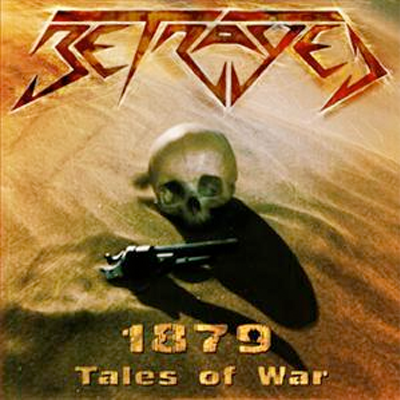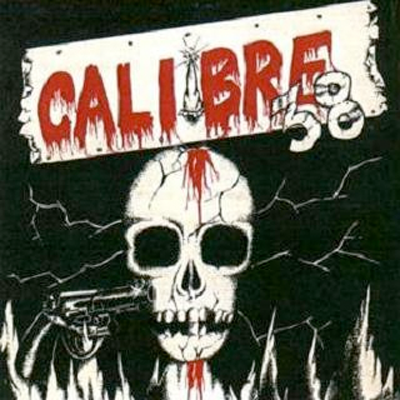
BETRAYED, 1879 Tales of War (1990, Oso)
The skull:
The war in question is the Saltpetre war, which I’m guessing not many people outside of South America have ever heard about, but in short, the war was about control of nitrate deposits in the Atacama desert (hence the sand) and was fought by Chile, Peru, and Bolivia. I doubt the combat involved men racing across the sands on foot firing pistols at their enemies, but you never know. Maybe that’s how it went down, and maybe this is the most historically authentic Big Dumb Skull ever. At the least, it seems likely that this is an original photo for this album, which makes it the first classic snap-a-shot-of-a-real-skull BDS in a long time. Well played, Betrayed.
The music:
I was going to say that Betrayed play thrash like high schoolers, but then I remembered that Death Angel were just kids when they recorded The Ultra-Violence, so I guess Betrayed play like grade schoolers. That alone would only make them medium bad on the broad spectrum of old thrash quality, though. It’s the vocals that really push Betrayed into the red. The “singing” here kinda sounds like Snake doing an interview, or Tom G. Warrior in “Mesmerized” if he sounded a little less like a haunted house ghost. It’s a weirdly accented Sprechgesang. Betrayed wear their influences on their sleeves, too: a Voivod riff here, a Kreator knick there, Metallica throughout. There’s not an original (or good) idea to be had here, and to boot the playing and production are terrible. The only people who would like this are the guys who only listen to shit no one else has heard of. If you’re one of those dudes, then Betrayed just might become your new favorite band.
— Friar Johnsen

